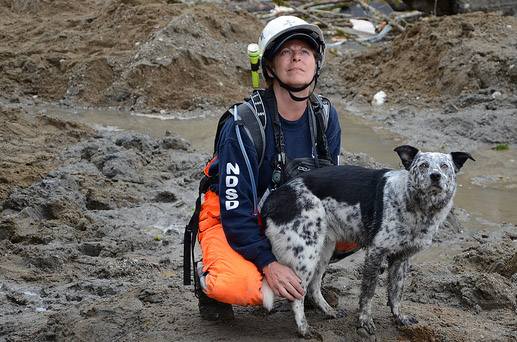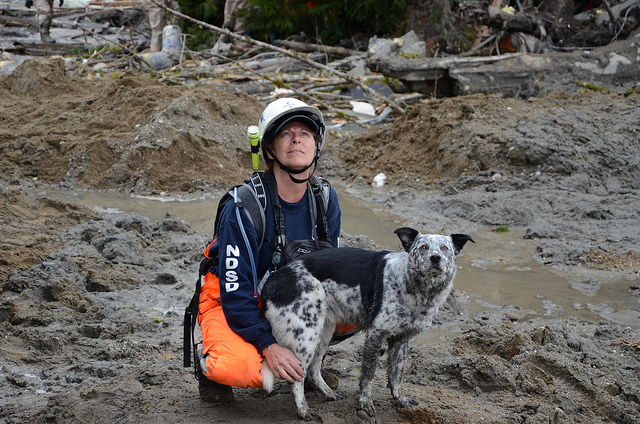Disaster Philanthropy Playbook

Animal Welfare
Introduction
For many, animals are a source of companionship and affection, and provide essential mental support. As such, the safety and well-being of household pets are important components of disaster planning, and animal rescue efforts should be incorporated as appropriate into preparedness strategies for individuals and readiness plans for organizations and communities. Lack of advance planning in this regard puts animals, their owners and at times first responders in danger.

- It is well-documented that one of the major reasons why people do not evacuate their homes, even when faced with life-threatening, imminent danger, is because they cannot evacuate with their pets;
- According to the Center for Disease Control and Prevention, households with pets are almost twice as likely not to evacuate as those without pets;
- Following the 2005 hurricanes, Congress passed the Pet Evacuation Transportation Standards Act, which requires state and local governments to include household pets in emergency evacuation plans;
- Key activities pertaining to animal welfare disaster response include:
- Search and Rescue;
- Evacuation and Transportation;
- Planning and Resource Management;
- Sheltering (providing both animal sheltering with their pet owners and also animal-only shelters);
- Veterinary Issues (including animal decontamination, HazMat, and radiological issues).
Innovative Practices
Support initiatives that focus on animal welfare as related to disaster preparation and response, such as:
- raising awareness of the importance of planning for the safety of pets in the event of a disaster;
- educating individuals on how to develop their own emergency response plan for their pet;
- identifying the highest at-risk population of pet owners, such as older adults and persons with disabilities;
- mobilizing large-scale rescue operations in the aftermath of a disaster which could involve hundreds or sometimes thousands of animals.
What Funders Are Doing
The following are examples of innovative practices and grants that philanthropic organizations have supported, developed and/or implemented related to animal welfare.
Animal rescue efforts should be incorporated as appropriate into preparedness strategies for individuals and readiness plans for organizations and communities.
The following animal welfare grants are associated with COVID-19:
- Chewy, Inc. announced it is working alongside Greatergood.Org and other nonprofit partners to donate more than $1.7 million in pet food, health care supplies and other products to animal welfare organizations most severely affected by the regional economic impact of COVID-19.
- PetSmart Charities committed $1 million to support pets and people affected by COVID-19. These funds will support both the animal shelters caring for pets and organizations that are helping impacted people keep and care for their pets in the areas with the highest number of reported cases in the U.S. and Canada.
- The Delaware Community Foundation donated $28,000 to fund community pet food banks in partnership with the Delaware Humane Association and the Delaware SPCA for families in need statewide.
- The Thomas Golisano Foundation donated $5,000 to the Beverly Animal Shelter in Waterloo, New York, to cover unexpected costs due to the pandemic.
- The Hartford Foundation for Public Giving gave a $2,000 grant to No Animal Left Unfed to support them in maintaining the Community Pet Pantry in Hartford during COVID-19.
Other grants related to animal welfare include:
- As part of Center for Disaster Philanthropy’s response to the 2019-2020 Australian Bushfires, a $1.19 million grant was awarded to the World Wildlife Fund (WWF) to support their long-term recovery activities. This gift, CDP’s largest international grant, focuses on wildlife and environmental restoration and addresses needs and gaps in the recovery, mitigation and prevention processes that are the most significant and most profound.
- Boohoo.com donated $69,000 (AUD 100,000) to Wires Wildlife Rescue to support their work in the wake of the 2019-2020 Australian Bushfires.
- The Rachael Ray Foundation donated $250,000 in 2019 to support the American Society for the Prevention of Cruelty to Animals in transporting 200 homeless animals from areas in the path of Hurricane Dorian to shelters outside of the storm’s predicted path.
- In 2018, the Wayne & Gladys Valley Foundation donated $100,000 to the University of California, Davis – School of Veterinary Medicine to support their veterinary catastrophic need fund for animals affected by the northern California wildfires.
- The Humane Society of the United States donated to Equine Rescue Aiken in South Carolina in 2018 totaling $37,000 for fencing, supplies and feed for animals affected by hurricanes.
- AKC Reunite gave $10,000 to the Florida Veterinary Medical Association to provide emergency veterinary medical care, rescue and sheltering from the aftermath of Hurricane Michael.
Key Takeaways
- Emergency preparedness plans must incorporate evacuation, transportation and sheltering options for household pets, outdoor pets, and farm animals in order to ensure the health and safety of both pet owners and animals;
- Pet owners are less likely to evacuate their homes in the face of imminent danger because they refuse to leave their pets behind putting themselves, their pets and first-responders in danger;
- Cooperation between local nonprofits, social service agencies, and emergency management departments can mitigate loss of life and support effective advocacy, education, and training for pet owners.
Further Reading
- Uniting for Animals: New Initiative to Fund Disaster Response Efforts
- Caring for Animals – a wealth of information provided by Ready.gov
- CDC’s Disaster Preparedness for your Pets
- Make a Disaster Plan for Your Pets